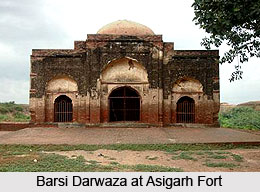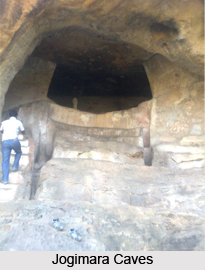Sangeeta Kalpalatika is a rather ancient manuscript on Indian music. There is only a single manuscript of Sangeeta Kalpalatika kept in Orissa state museum. It is written on a palm leaf in Oriya character. The date of the copy is fixed 18th century A.D. Its condition is very poor with worm eaten leaves. Hence it is illegible. The author of the work, Haladhara Mishra, belongs to Orissa. He is the son of Dinakara and Padmavati. The famous expert on the Dharma Sastras, Shambhukara Mishra, was his grand father. Haldhara Mishra has written two famous works, namely, `Sangeeta Kalpalatika` and `Vasant Utsava Mahakavyam`.
The treatise is a remarkable contribution of Orissa to Indian musicology. `Sangeeta Kalpalatika` covers the entire field of Sangeeta - Geeta, Vadhya and Nirtya. It consists of eighteen chapters named `Stavakas`, seven of which are devoted to Geeta, ten to Nritya and one chapter to Vadya. Thus this treatise has given more importance to Nritya. Geeta and instrumental music have been given less importance.
The first chapter is named Sudhageeta Nirupanam. The author has given the traditional definition of Sangeeta as the art of Geeta, Vadya, Nritya. The chapter deals with Nibaddha and Anibaddha Geeta. The author describes three types of Geeta - Shuddha, Chayalaga and Kshudra Geeta instead of Mishra geeta. Another difference is the use of three Dhatus in Prabandhas. The Melapaka Dhatu is omitted by all. According to him Sudha Geeta should comprise of Alapa, Dhatu, Matu and Anga. The Alapa should have meaningful words. He has given examples of self-composed Prabandhas set in nine Talas. The second chapter is devoted completely to Tala, its definition, and names of one hundred one Tala and nine Sudha Talas. He describes the Sudha Prabandhas which are named by him as Chayalaga or Salaga with examples. Third chapter is on Kshudra Geeta. They are four-fold: namely, Chitrakala, Chitrapada, Dhruvapada and Panchami. They have no fixed Talas. The examples are given for these four types of Kshudra Geeta. The Kshudra Geeta seems to be the speciality of Orissan music.
The fourth chapter is about Geetaguna i.e. the characteristics of a good Geeta. It contains the definitions and various aspects of Laya, Yati, Graha Andmana of Talas. The application of Gamaka in singing, improvisation of Tanas and elaboration of Raaga are discussed. It gives examples of different Angas (limbs) of Prabandha such as Swara, Pata, Tena, etc. The fifth chapter deals with the demerits of songs both divine and worldly. For example, Music of the world has demerits of pronunciation of syllables, repetition etc. In the sixth chapter the author has given the name of the Raagas and their time of singing. Haladhara follows the Raaga Raagini system for Raaga classification. He has given names of six Raagas along with their six Raaginis. There are many unusual names of Raaginis, such as Prapachani, Gunamanjari, Lalita, Gundakeri, Surchika, Kadhu, Chinta etc.
The seventh chapter consists of definition of all basic terms Like Swara, Sruti, Grama etc. There are seven Swaras and are sung in three octaves. The author does not define the ragas mentioned by him and has not indicated the Swara but indicates the time of day and night when they should be sung. The eighth chapter is called Vadyanirupana. It deals with the instruments. The author has mentioned four types of Vadya, namely, Tata, Anadha, Susira and Ghana but describes only the Vina. The author doesn`t discuss Murchhanas but he has mentioned that in order to produce Raagas one has to fix up Murchhanas in the Rudra Vina. He used the word "Samsthana" in the sense of Mela. In the ninth chapter, the Nritya is dealt with elaborately. The Hastas, Charis, Sthanakas, head rotation, looks, eyebrow movements etc, are discussed. In the last chapter he describes the correct traditional procedure of presenting dance and the instrumental music in different stages.
Chapters ten to sixteen deal with different aspects of the art of dancing. The author has described twenty four kinds of hand postures and thirteen kinds of combined hand poses. Chapter eleven deals with head movements for expressing different Bhavas. Abhinaya part is most important in Odissi dance today. The twelfth chapter deals with the eye movements based on Rasas. The thirteenth chapter deals with several kinds of brow movement and in chapter fourteen he has discussed the Sthanakas and the body movements. The fifteenth chapter describes the Charees. Chapter sixteen is devoted to the different Karanas. Chapter seventeen describes different Kalas. In chapter eighteen the author describes the Sudha Padhati of presenting a dance performance, entrance of the dancer to the stage, the accompanying music in different stages of dance.




